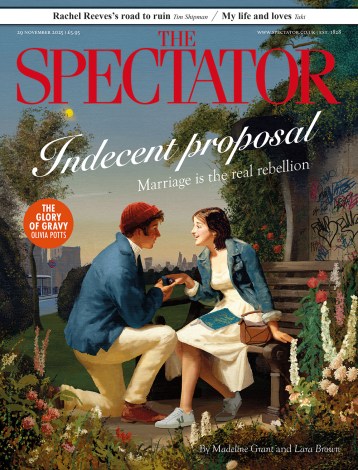
This is a treasure house of a book, filled with curiosities and evidence of a rare breadth of patient investigation. Anyone who has read one of Graham Robb’s books, from his early biographies of classic French writers, through a wonderfully amusing study of 19th-century homosexuals, to a series of historical and geographical studies of France and Britain, will not be surprised at that.
What is new in this idiosyncratic history of the British Isles is Robb shifting some of his own encounters to the foreground. In previous books, the experience of bicycling has been fruitfully used. Robb and his wife Margaret are serious cyclists, and the pace and scale of a day’s travel, slow enough to explore things in detail, fast enough to cover a good stretch of landscape, has influenced the scale and tempo of his works. In this one, he goes further, threading a series of personal vignettes through a sequence of historical chapters ranging from the pre-human to the present.
In other writers this might seem artificial or contrived, but in a spirit as beadily, energetically interested as Robb’s it is perfectly possible to think about moments where large historical movements, some many centuries old, have inflected an individual life and mind. A childhood habit of hiding with his gang in invisible dens within immense and ancient hedgerows moves seamlessly into a consideration of how the countryside was enclosed; why hedges were necessary; and the unique survival of a non-enclosed farming landscape in the open fields at Laxton, in Nottinghamshire.
Samuel Pepys’s taste in plays and new fashions and his thirst for novelty come to Robb’s mind when he has a drink in the City with a university friend, now working at Lloyd’s, the inventor of a useful bicycling gadget. Robb’s early professional experiences while living in Brixton and teaching French in a rough old East End state school are mapped on to the project of postwar immigration and subsequent myth-making about British hospitality. (Robb found, incidentally, that his recalcitrant pupils could be made to pay attention if West Ham footballers were brought into lessons – ‘Qu’est-ce que Trevor Brooking va acheter à la boulangerie?’)
The connection between the intimately contemporary and the remotely historic is one that we only notice when it is violently disrupted. The persistence of the English shires is a good example. When, under Edward Heath, local government was reorganised in 1974 and there was an attempt (among other changes) to erase the border between Herefordshire and Worcestershire, it had a number of effects. One was that Robb’s father, a probation officer, ‘now held sway over the entire population of convicted delinquents between the Avon and the Wye’. Another was to arouse the loathing of the population. History hardly recorded a time before the shires’ existence, and ‘nobody in Herefordshire or Worcestershire thought their habits of life were the same as their neighbours’. The new system was abolished in 1998 after a consultation found that only 2 per cent of the population were in favour of it. They’d got used, in the same period, to decimal currency. But the old shires couldn’t be done away with.
The result of this palimpsestic approach is entrancing and constantly absorbing. As a history of these islands, it tends towards the marks left on the landscape by large movements. Robb relishes, as most good historians do, the chance of correcting popular but erroneous beliefs. We learn that queuing, far from being an ancient trait of the English, was an ‘irksome novelty enforced by bus conductresses’ as late as 1939. (Jerome K. Jerome thought queuing had been imported from Paris.) Shires were not determined by Roman boundaries but predate them, since roads often cut heedlessly across the established boundaries. Also, surprisingly, the ancient straight or grid-pattern of streets near Shrewsbury are found to be Iron Age. (‘I just can’t see where this fits in with everything we know about the Iron Age,’ one historian wailed, sweeping aside the indisputable evidence. ‘My instinct is that it is Roman.’) The medieval Normans, supposedly all-controlling, had in fact very little impact on the way the landscape was identified – a ‘negligible’ number of place names come from Old French.
Robb is a cogent guide, too, to questions which were shaped by factors we don’t easily notice as relevant. Hardly anyone had a sense of the breadth of society until the coming of the railways. (A railway guide of the 1840s remarks that to the ‘student of human character’ it would be hard to find ‘more heterogeneous groups’.) It is striking that, around the same time, the English novel starts to explore a panorama of society, too. And we are told that the reason English aristocratic titles don’t go back as far as French, and that great families never ruled counties in the same way, is because of Edward IV’s decision to execute the losing nobles after a battle.
Far from being an ancient English trait, queuing was an ‘irksome novelty enforced by bus conductresses’ in 1939
Robb is perhaps at his most fascinating when addressing subjects of real obscurity. The century and a half after the departure of the Romans in 400 is the bleakest in our history and swathed in mystery. We know there were plagues, famine,a complete breakdown of society and the dead left unburied. It was also thought that Saxon invasions took place at this time, but that doesn’t appear to be the case. A more famous moment is taking shape out of myth and into fact. King Arthur seemed a figure of legend, deriving only from a list of 12 battles in a 9th-century chronicle. The sites of the battles were regarded as unidentifiable until the different conventions governing an Iron Age atlas of Britain were recently understood. The chronicle, it turned out, listed the battles in ‘a geographically logical order’. It appears, according to Robb, that Arthur was a 2nd-century British general, who ‘can now be divested of his medieval frippery and celebrated along with Caratacus, Boudica and Calgacus as one of the would-be saviours of Britannia’.
Still more nebulous, and a welcome, puckish presence even in a responsibly-minded history, is the occasional venture into the mysteriously occult. On a childhood holiday in Sutherland, Robb discovered that a bulge in the earth revealed a cavity, a narrow tunnel, which, after excavating by hand, he was informed by a local historian was one of hundreds of unexplored prehistoric ‘chambered tombs’. That night his mother was visited by a nightmare of the prehistoric living dead gazing glumly through the windows of their rented cottage; they packed up and left the next day. In another episode, a bored sister, a friend and the family dog put together a Ouija board from Scrabble tiles and find themselves talking to a 15th-century sailor, who told them he had drowned. Where? D R O I T W I C H. But wasn’t Droitwich rather a long way from the sea? The sailor was irritated. I N A P O N D, he informed them.
This is a constantly interesting and informative book, written precisely and evocatively throughout. I will say, though, that for my taste the last couple of chapters slightly disappoint. When we approach the present, Robb’s originality of mind and relish of independent thinking are less striking, as we settle into some fairly well-worn reflections about the corruption of politicians (that wretched duck island again) and climate change. Since so much has been said, rewardingly, about the friability of Britain’s borders, never remaining in one place thanks to the sea’s fury among other factors, bewailing the impact of changes in climate seems an odd place to wind up. Still, Robb has an amusing allegory about our political leaders, courtesy of the stickleback, a fish I myself used to love catching as a child in a quiet brook in a London suburb. Sticklebacks instinctively follow the leading fish:
But what tells the leading fish where to go? After dissection of a great number of sticklebacks, it was discovered that the leader is the individual whose brain is damaged or genetically defective… It would be rash but not irrational to apply this finding to the whole of human history.
Ambitious, with a tinge of eccentricity and perfectly grown-up enough to sustain the occasional disagreement, this is a rich pleasure of a book.
Philip joins the latest Edition podcast to discuss his review, alongside Tim Shipman, Lara Brown and William Moore:









Comments